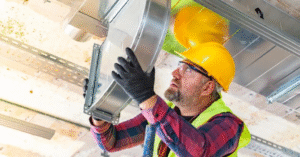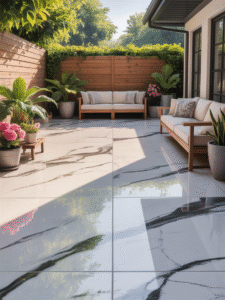Cardboard Boxes and Die Cut Boxes: Practical Uses and Benefits Explained
Most people think of cardboard boxes as something you only deal with during a house move. You stack them, tape them, then forget about them until you’re tripping over them in the garage. But in reality, cardboard boxes and die cut boxes are everywhere, silently shaping the way we shop, store, and even decorate. They’ve been part of Australian households for generations, from storing Christmas decorations to protecting a new TV. And the more you look, the more uses you’ll see.

Why Cardboard Still Wins in Packaging
Let’s start with the basics. Cardboard is inexpensive, durable, recyclable, and oddly versatile. You can fold it away when you’re not using it, or pile it up like bricks when you are. Unlike plastic containers, which occupy space whether they’re full or not, cardboard is content to sit back and wait for the next major project.
Consider how often you’ve grabbed a box when things got wild, moving out of a lease, shipping a package, or simply storing the increasing amount of kids’ playthings. Boxes aren’t exciting, maybe, but they’re reliable. They’re that quiet friend who doesn’t say much but is always around to help you move the heavy things.
The Clever Twist: Die Cut Boxes
And now let’s discuss die cut boxes. If cardboard boxes are the versatile generalist, then die cut boxes are the practical cousin who arrives with tools and a blueprint. They are machine die cut (similar to a cookie cutter for cardboard) to produce exact shapes, flaps, and slots.
Ever purchased a pair of shoes and seen how closely the lid clings to the base? Or, received a tiny gadget sent in the mail so tightly packed that it didn’t move an inch? That is die cutting in action. It enables you to have packaging that is not only protective but also neat without requiring mountains of filler or tape.
For companies, die cut boxes also have an aesthetic advantage. They can be shaped for branding or made with features to facilitate easy opening. But even locally, they are convenient. Think of installing your shed or shipping delicate presents, a box that fits actually counts.
Everyday Uses That Don’t Make the Spotlight
Most of us underestimate just how often we lean on cardboard. Here are a few everyday uses that might sound familiar:
- Storage: Seasonal clothes, tax records, or the kid’s year 2 art project.
- Moving house: The ultimate stress-test for any box.
- DIY projects: Kids’ cubby houses, makeshift costumes, or that castle you promised to build last school holidays.
- Gardening: Flat boxes as weed mats under mulch, or cut-up pieces to protect plants from slugs.
- Mailing gifts: Because bubble wrap alone is a gamble.
Die cut versions step in when things need more precision, like safely posting cupcakes to a friend, storing tools, or keeping glassware from smashing.
Comparing Packaging Needs: Suburb by Suburb
The packaging needs of Sydney are also varied. Cardboard has uses depending on where you are.
Consider Balmain in the Inner West, for instance. Narrow streets, heritage houses, and a high rate of apartment living result in space being at a premium. Residents there enjoy tearing open boxes quickly because there isn’t enough space to store them. But smaller die cut boxes come out top, ideal for online purchases and small storage.
Compare that with Castle Hill in the Hills District. Larger household families turn their garages into mini-warehouses. They will stack huge cardboard boxes high up with Christmas lights, camping gear, and children’s bikes that have “room to grow.” In these scenarios, bulkier, heavier boxes are the heroes.
Go to Manly and the coast has another tale. Sea air and moisture can weaken cardboard when stored in damp garages. People around here prefer to sort through boxes faster or replace them more often. Die cut boxes that have a tight fit are more apt to work for shipping and keeping things from humidity.
It is the same substance, though every suburb relies on it to some extent.
Why Boxes Beat Plastic More Often Than Not
Australians are practical. If a job can be done with a cardboard box instead of buying something new, most of us will grab the box. And there’s good reason.
- Recyclable: Toss it in the yellow bin and it gets another life.
- Affordable: You don’t need to spend a fortune on storage tubs.
- Customisable: Cut it, fold it, write on it, or tape it, cardboard doesn’t complain.
- Lightweight but strong: Easy to carry without breaking your back.
Plastic has its place, especially in damp areas, but cardboard wins for short-term storage and transport.
Common Cardboard Fails (and How to Avoid Them)
Of course, cardboard isn’t bulletproof. Anyone who’s tried moving house in the rain knows this. A soggy box is basically paper mache with your belongings inside. The trick? Double-boxing fragile items or lining the inside with a garbage bag if you’re worried about leaks.
Another oldie but a badie is over-packing. We’ve all attempted to stuff too much into one box, then stand helplessly as the bottom collapses halfway through the lift. The rule of thumb? If you can’t lift it comfortably, the box won’t make it either. Distribute the weight and you’ll be thanking yourself later.
And then there’s the “mystery box”, the one shoved in the corner of the garage with no label. Six months later, you’ll be guessing whether it holds Christmas baubles or grandma’s teacups. A marker is your best friend.
From Local Shops to Online Giants
Cardboard has also evolved with the manner in which we shop. Walk along a typical high street in Marrickville and you’ll see little shops recycling boxes for delivery. Shop from an online store and you can guarantee your package is arriving in a carefully cut die cut box.
It’s a package that adapts. From being used to transport handmade candles to a 50-inch television, it stretches or shrinks without complaint.
The Takeaway
Cardboard boxes and die cut boxes might not grab headlines, but they quietly keep life organised. They help us move, store, ship, and even entertain the kids on a rainy day. Different suburbs lean on them in different ways, from the compact storage needs of Balmain to the larger garage-friendly stacks in Castle Hill.
The beauty of cardboard lies in its simplicity. Strong enough to protect, light enough to carry, and recyclable enough to keep our bins from overflowing with plastic. Next time you flatten a box or break down packaging, take a second to appreciate it. Behind every move, every delivery, and every storage solution, there’s a box making life easier.






Post Comment